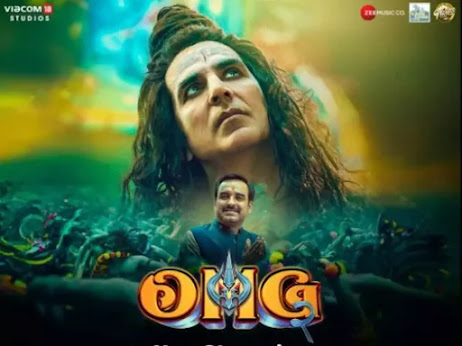Inside Out 2 is a Mental Health Masterclass Disguised as a Kids' Movie – Here's Why It Matters!
Pixar’s Inside Out 2 is a movie that Speaks to the Mind and the Heart. As a mental health professional, I found this film to be a profound representation of adolescence, emotional growth, and psychological resilience. It’s a movie which gives us an understanding of our inner world. The movie takes us back into Riley’s mind— Riley is exceptional, she is top of the class, kind, nice to stray cats, officially teenager, she has grown tall very fast. All her different islands (i.e different memory structures), be it - family, friendship, personality islands etc are still going stronger, which has created a healthy mental framework, beliefs & attitudes giving rise to a good sense of self that support positive mental well-being & resilience.
The movie well showcases the conscious & subconscious mind: Riley's "Protection System", which is the depiction of the subconscious mind that takes all those unpleasant, repressed & suppressed memories to the "back of the mind". For instance, "Penalty One" which was weighing Riley down" has been well depicted in the movie. Also the consolidation of all other good memories as long-term memories which are accessible to the conscious mind is well explained in the movie.
In the movie the Riley's belief system is depicted as a river with many strings attached to it. The emotion "joy" is shown to strike different strings which echoes different beliefs - "Mom & Dad are proud of me", "I'm kind", "I'm strong", "I'm brave", "I'm really a good friend", "I'm a winner" etc which is a good portrayal of positive affirmations & recalling of one's strengths, & also the emphasis of the importance of the emotion "Joy" in our lives & it's key role in development of healthy belief system.
1. Emotions Grow Up Too: From Simplicity to Complexity:
In Inside Out 1, we met Joy, Sadness, Anger, Fear, and Disgust—five emotions that guided Riley as a child.
In Inside Out 2, the emotional roller coaster is shown to kick in as Riley enters puberty. Chaos & apocalypse is signalled. Suddenly her emotional control center is under renovation & upgradation.
New emotions arrive: Anxiety, Embarrassment, Envy, and even Ennui (a bored, disinterested teen emotion perfectly portrayed). This reflects real psychological development—teenagers don’t just feel more, they feel differently. The film captures this shift with brilliance and compassion.
2. Anxiety Takes Center Stage – And That’s Not a Bad Thing:
Anxiety is portrayed not as a villain, but as an overprotector. Riley's Anxiety tries to prepare her for social rejection, future goals, and peer pressure—something many teens and adults can relate to.
What Inside Out 2 gets right is this: Anxiety isn’t the enemy. It’s part of our evolutionary process. When balanced, it helps us prepare and stay safe. But when it dominates—when it silences Joy or Sadness—it becomes harmful. That’s a lesson we all need to learn.
3. The Myth of “Good” and “Bad” Emotions Gets Debunked:
The film gently challenges the notion that emotions like Sadness or Anger are “negative.” It shows that even uncomfortable feelings have a role. In fact, it’s when Riley tries to suppress or ignore certain emotions that things go wrong.
This is a central principle in therapy: All emotions are valid. We need to understand them, not fight them. Emotional acceptance is the first step to healing and mental strength.
4. Emotional Regulation is the True Superpower
The heart of Inside Out 2 is Riley’s journey toward internal balance. Real growth happens when emotions begin to listen to each other, share space, and work together. That’s emotional regulation in action.
As mental health professionals, we often help clients identify emotions, tolerate discomfort, and respond with intention—not react impulsively. Riley’s struggle—and eventual growth—is a beautiful, visual representation of this process.
5. A Conversation Starter for Families, Schools, and Counselors:
This movie isn’t just for kids. In fact, Inside Out 2 is a perfect tool for opening up meaningful conversations between parents and teens, teachers and students, therapists and clients.
It can help normalize emotional chaos during adolescence and encourage empathy toward young people who are “acting out” or feeling overwhelmed. It’s also a gentle nudge to adults: are we listening to our own emotions, or have we locked some of them away?
Conclusion: A Must-Watch for Emotional Wellness
Inside Out 2 teaches us that growing up doesn’t mean having fewer emotions—it means learning to make space for more of them. It’s not about control, but connection. Not about silencing feelings, but understanding them.
So whether you're a teenager, a parent, a teacher, or a mental health worker—this movie has something vital to say to you. It's a celebration of emotional depth, self-awareness, and healing.
Final Takeaway:
Being mentally healthy doesn't mean feeling happy all the time. It means feeling everything—and learning how to live with it.



Comments
Post a Comment